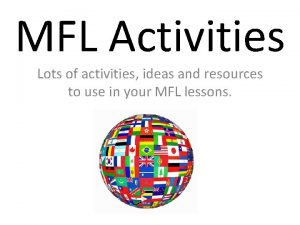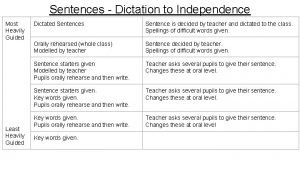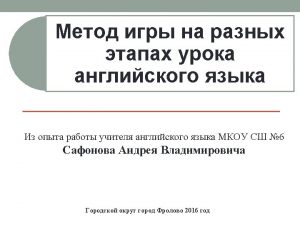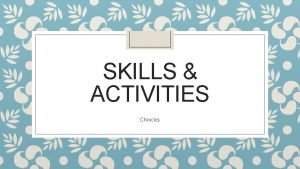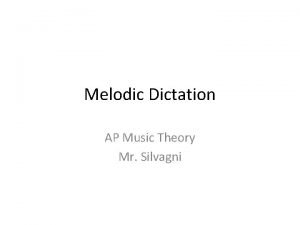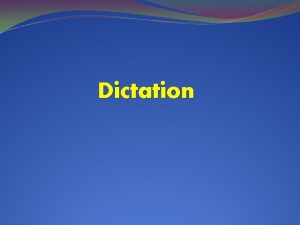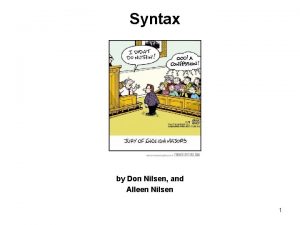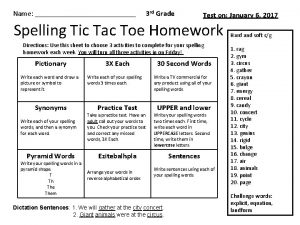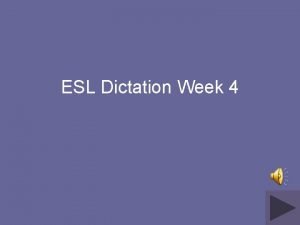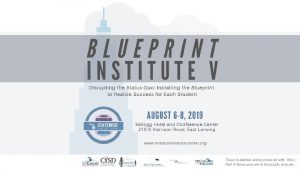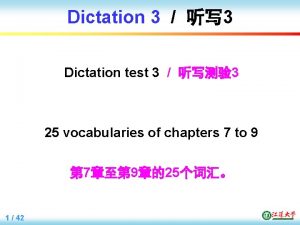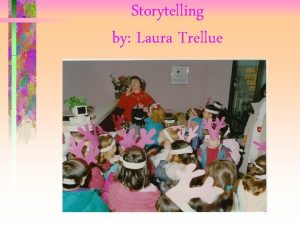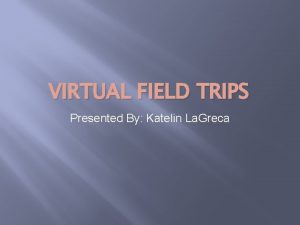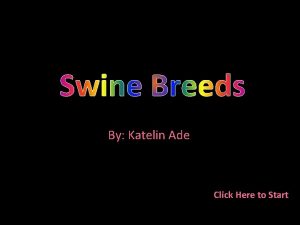Storytelling and Dictation Danielle Davis and Katelin Davis














- Slides: 14

Storytelling and Dictation Danielle Davis and Katelin Davis

What is Storytelling? • The National Story telling network defines story telling as “the interactive art of using words and actions to reveal the elements and images of a story while encouraging the listener’s imagination. ” • Story telling: • is interactive • uses words • uses actions • presents a story • encourages the active imagination

Research Intellectual Benefits Social Benefits • increases speech and communication skills related to enunciation and articulation • enhances social competencies and develops the classroom community • improve critical reading skills in content areas • increases the development of bilingual/multilingual skills • effective instrument for teachers/adults to learn more about the child • folk tales helps children who have mild disabilities acquire and generalize social skills development to be more successful in mainstream classroom

What is dictation? • during dictation the caregiver/teacher writes down exactly what the child says without any changes. • Ask prompting questions such as, “what happened next? ”, “And after that? ”, “Then what happened? ” • Repeat what the child says “Echo” • Even if language or grammar is incorrect write it down. This will be a great reference to have when assessing the understanding of literacy skills • the child develops language, literacy, and social and emotional skills appropriate to his age level and understanding. • Dictation is helpful tool because with young children their ability to tell a story often far exceeds their ability to physically write it down.

Why is this important as Early Childhood Professionals? • Children love to talk! • We are directly involved with our children all day as they are telling stories. Write it down! • These dictations provide records for assessment, parent conferences, and are great keep sakes for when they are older

Put it together! What does it look like?

Sticker Books A Great Activity for Literacy

Step 1: Add Stickers/Stamps Each student received 5 large blank index cards. They were then asked to put stickers on the pages. We explained that they would be telling a story so they needed to be reserved when deciding how many stickers to put on each page and that they needed to pick one side or the other to put the stickers on. * Leave a ½ inch margin for binding

Step 2: Binding

Step 3: Create your own story! • Based in the stickers in the book the child will “write” a story. • The actual writing part varies from student to student. Some may be more interested in the story telling part and will come up with elaborate stories but be disinterested in writing. For this we wrote down page for page what the child said and then asked them to write one word that would let the reader know what was happening in the story. • Other students were determined to write complete sentences. Whether they new how to spell a word or not. They sounded it out with some help from the teachers and moved on to the next word. • Invented Spelling

Recommendations for Implementation • Allow sufficient time for adding text this process will take longer than you think. • Better with small group. One on one if possible. If you are good at multi tasking start the process in iterations. • If time is an issue. You can pre-bind the books.

Now it’s your turn! Demonstration on making and binding sticker books

Pull tape pieces longer than the width of the index card. Place sticky side vertically on the left side of the index card. Half of the tape on the card half of the tape off the card. Repeat for all pages. Include a blank cover page. Stack pages last page on the bottom to first page on top. Add cover page

Fold tape over, in half Cut excess off of the top and bottom
 Strip bingo mfl
Strip bingo mfl Harmonic retrogression
Harmonic retrogression Mechanical dictation
Mechanical dictation Dictation sentences
Dictation sentences Dictation in english
Dictation in english Receptive grammar activities
Receptive grammar activities Melodic dictation tips
Melodic dictation tips Seen dictation
Seen dictation What is dictogloss
What is dictogloss Topicalization
Topicalization Grade 1 dictation sentences
Grade 1 dictation sentences Esl dictation
Esl dictation Where did shadow puppets originate
Where did shadow puppets originate Danielle causey
Danielle causey Pixar storytelling framework
Pixar storytelling framework
